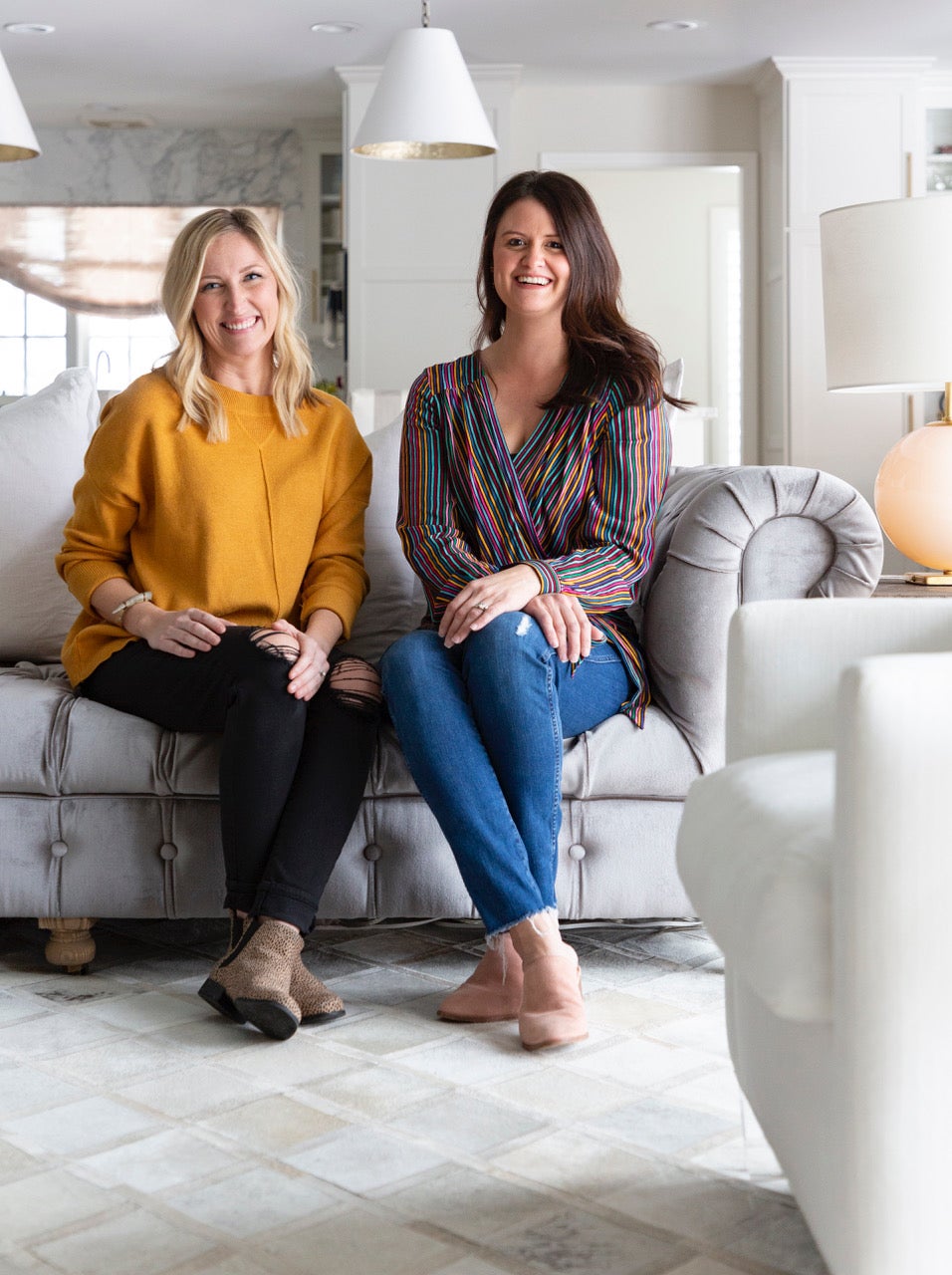The 50 States Project is a yearlong series of candid conversations with interior designers across the country about how they’ve built their businesses. This week, Kat Benson and Katy Cassaw, co-founders and principals of Mission, Kansas–based Nest Interiors, tell us about how their small-town work ethic informs their business, balancing family life with firm growth, and why they’re still waiting for the I-made-it moment.
How did the two of you meet?
Katy Cassaw: Kat and I worked together at another design firm here in Kansas City, which ended up closing unexpectedly. I had been there for a while, almost five years, and Kat was there almost three. When she started, we just really hit it off, and she quickly became a friend. We just had a lot of similarities—design aesthetics, morals, values and the way we grew up. We both liked country music and we immediately connected on that.
Kat Benson: At the end of 2013, we all left for a Christmas break for a week or so, and when we came back, the owner told us that she was done. She had run the business for at least 25 years, she was over it, and she said she was closing the doors. We all were positively shocked. It was a pretty large firm, and she had been around for so long. I just didn’t expect it, and I don’t think Katy did either, by any means.
Cassaw: Kat and I were the last designers there. We had both been taking on our [own] projects at the time, bringing in business and managing the projects—so we were both pretty confident in terms of our skill sets. We went out looking for other positions in town, but there are not a lot of design firms in Kansas City. A lot of people just do it on their own or out of their house. I had more of a commercial background, so I started looking more on the commercial side. Kat and I kept in touch for a few months, but neither of us were really finding any jobs out there that could speak to us and make us excited. We met at Panera for lunch one day, and we were both wallowing in our misery. We just decided, “You know what? Let’s just start our own business.” It sounds totally crazy—and it was.
There was a client that had worked with Kat at the last firm—she had done all of their structural sections, and they had reached out [to the firm] really wanting to do furniture but couldn’t get an email back. They finally reached out to Kat directly through Facebook, so when we met that day, she was like, “Well, I have these people that reached out wanting to do furniture. … ” That was our first client. I have a little loft in my house, and we turned that into a makeshift office with some Costco tables. We started with that one client in 2014, and here we are today.
Was there a challenge in merging your two design aesthetics when you started?
Cassaw: Not at all. It’s funny because Kat and I have very different aesthetics personally, but we also appreciate the beauty of so many different things. I’m much more colorful. I like a lot of bold color and bold patterns, and Kat’s a lot more neutral and textural.
Benson: We’ve never really had an issue on that side of design aesthetics. We’re both very much in sync on that—we’ve been really fortunate.
Cassaw: I feel like we couldn’t be here seven years later if we didn’t mesh!
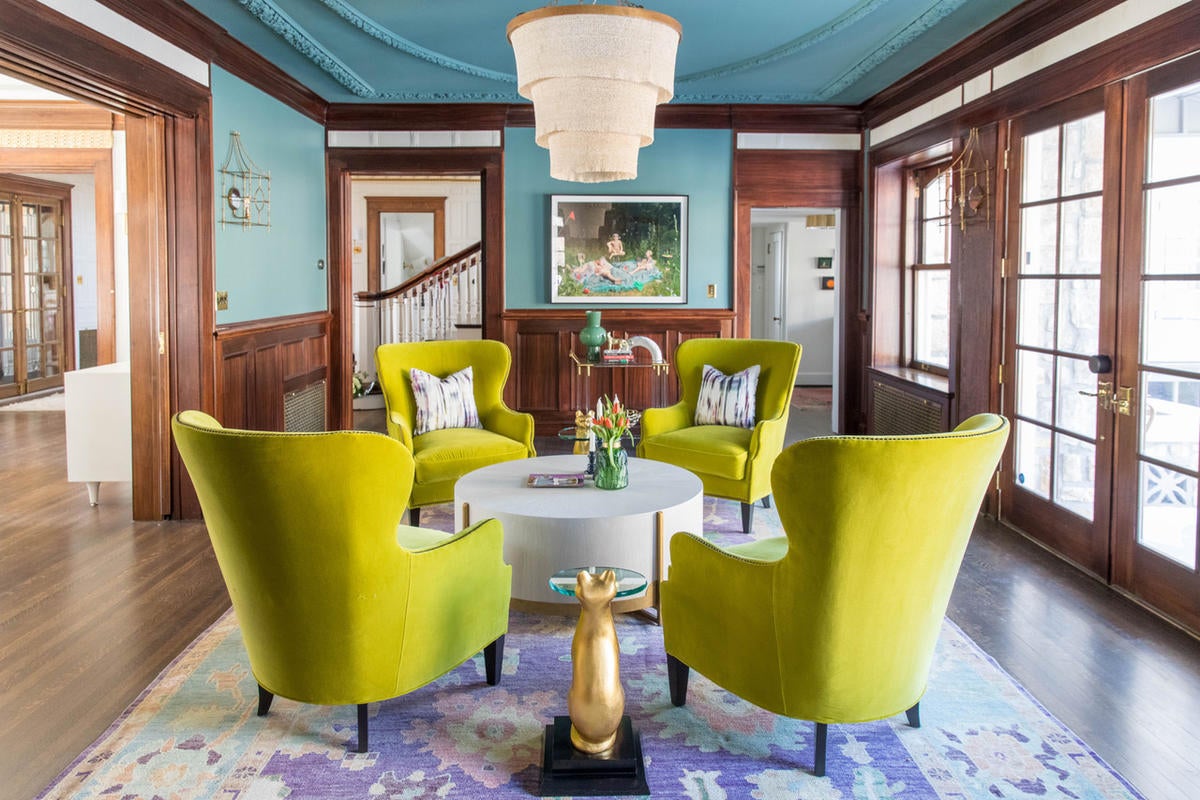
How did each of you get into design?
Benson: I grew up in a small town, and I remember how driving home in the evening, if it was dark outside and [people] had their lights on inside, I was fascinated trying to look in homes just to see what it was like in their house and how it was laid out. The whole idea of how people lived in their homes completely fascinated me.
I still do that in Brooklyn when I’m walking anywhere. I trip on the uneven sidewalks in my neighborhood all the time because I’ve got my neck craned to be like, “Oh, look at that amazing light fixture!”
Benson: I’m glad it’s not just me! We spend so much of our time in our homes, and it’s been so fascinating to me how people use their homes—but growing up in a small town, I did not know interior designers existed. I didn’t know that was a thing at all. I thought I would be an architect for the longest time and then realized that included the structural side and a lot of math, which I was definitely not down for.
I went to college to learn fashion design, thinking that was the creative outlet that I needed. While I was in college, I discovered that interior design is a real job that people do, so I moved and shifted into interior design, and I’ve been doing that ever since.
Cassaw: I always grew up loving art—paintings, drawings, whatever. I would color in my closet when I was a little kid by myself. I found the Art Institute in Denver, and after a couple of major changes trying to decide the path that I wanted to take, I ended up in interior design and went through college thinking I definitely wanted to do commercial design. I started off more on the commercial side, doing architectural plans, working for an architecture firm, and then moved over to the residential side when I moved to Kansas City. Looking back, I don’t know how I did commercial.
Did you feel a missing piece, or was it like, “This is what it’s supposed to be”?
Cassaw: My dad is a really hard worker, and he instilled in us that you work hard no matter what job you’re in. I grew up in a really small town, too, and I started bagging groceries and things through high school. I always thought, “I’m going to be the best grocery bagger. I’m going to work as hard as I can.” In the commercial field, I was always like, “Well, this isn’t that exciting picking a carpet that’s going to be in a facility, but you know what? This is fine.” I didn’t realize what I was missing until I started on the residential side. I just thought, “OK, this is what I’m doing, and I’m just going to work really hard at it.”
Was launching your own firm a dream for either of you?
Benson: No. I thought it would have been mine when I first started school, but the more I got into design school, in my heart, I was like, “Oh, my gosh, no way. There is so much to this. I could never.” I had no interest in that. In a way, fate pushed us into it—which is more than fine because I don’t know if we would have made the jump otherwise.
You had that one client you were doing furniture for. How did the business grow from there?
Cassaw: It’s funny because [in 2014] they told us, “We have a $5,000 budget to furnish our living room,” and we’re like, “Woo-hoo!” We presented our ideas to them, and then they just kept going—we worked with them for years and years, on pretty much every space. I think the last thing we did for them was last year! But honestly, they gave us confidence in being able to do what we love.
In the beginning, we took every job that we could. We did gallery walls, we did random Realtor things—honestly, anything to try and get our name out there. We talked to a lot of local interior designers that helped mentor us and [give us] direction. We did what we could and took anything and everything we could to get started.
When did it feel like you had it figured out? Was there a moment where you were like, “Oh, we made it—the ship is steady”?
Benson: That’s such a funny question because I’m still waiting for that. I feel like there have been so many changes. We were really getting a hold on it a couple of years ago or right before the pandemic. Then, with the pandemic, our business has blown up, and we are growing so much. It is great, but that’s definitely a whole new challenge that we’re trying to adapt to.
Cassaw: It’s also just the way that the industry has changed. When we started our business, we made our money through product. Now, everything is bought through the internet and shopped through the internet, so we’ve had to really restructure quite a few times over the years in terms of how we charge. Like Kat said, it’s ever-evolving, and I don’t know if we’ll ever quite figure it out.
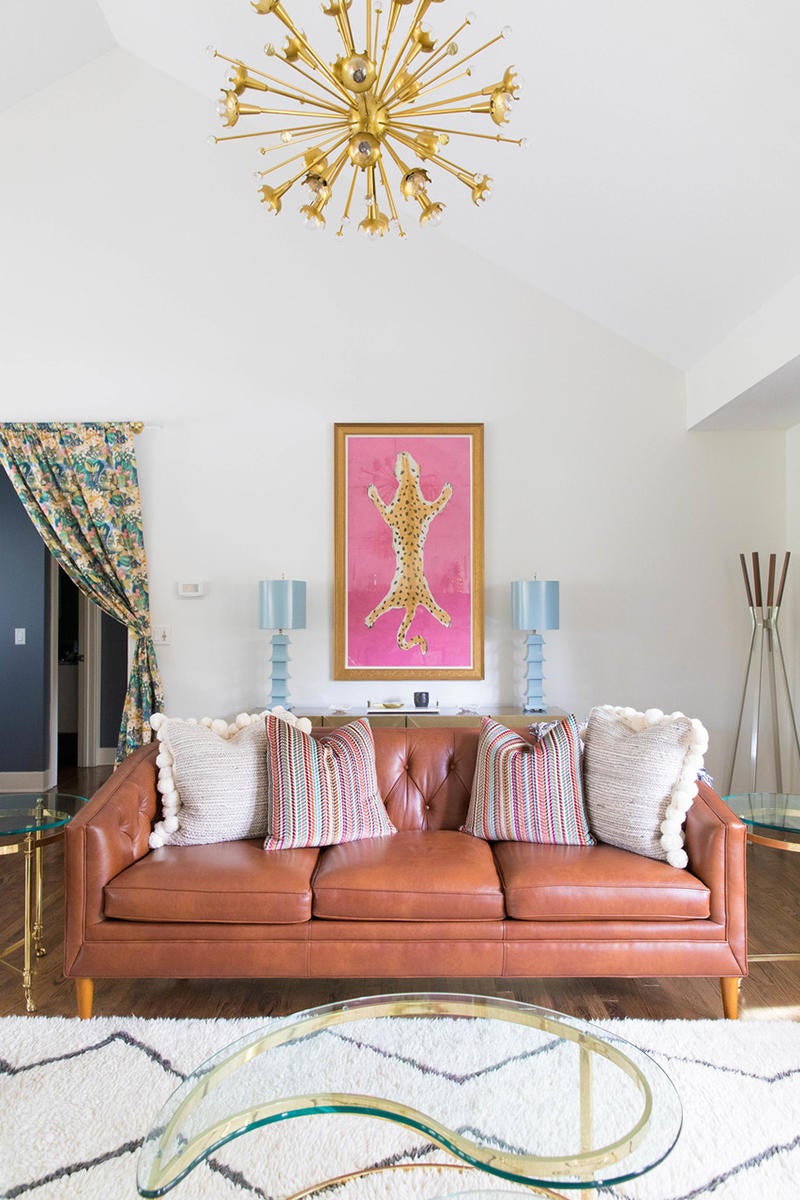
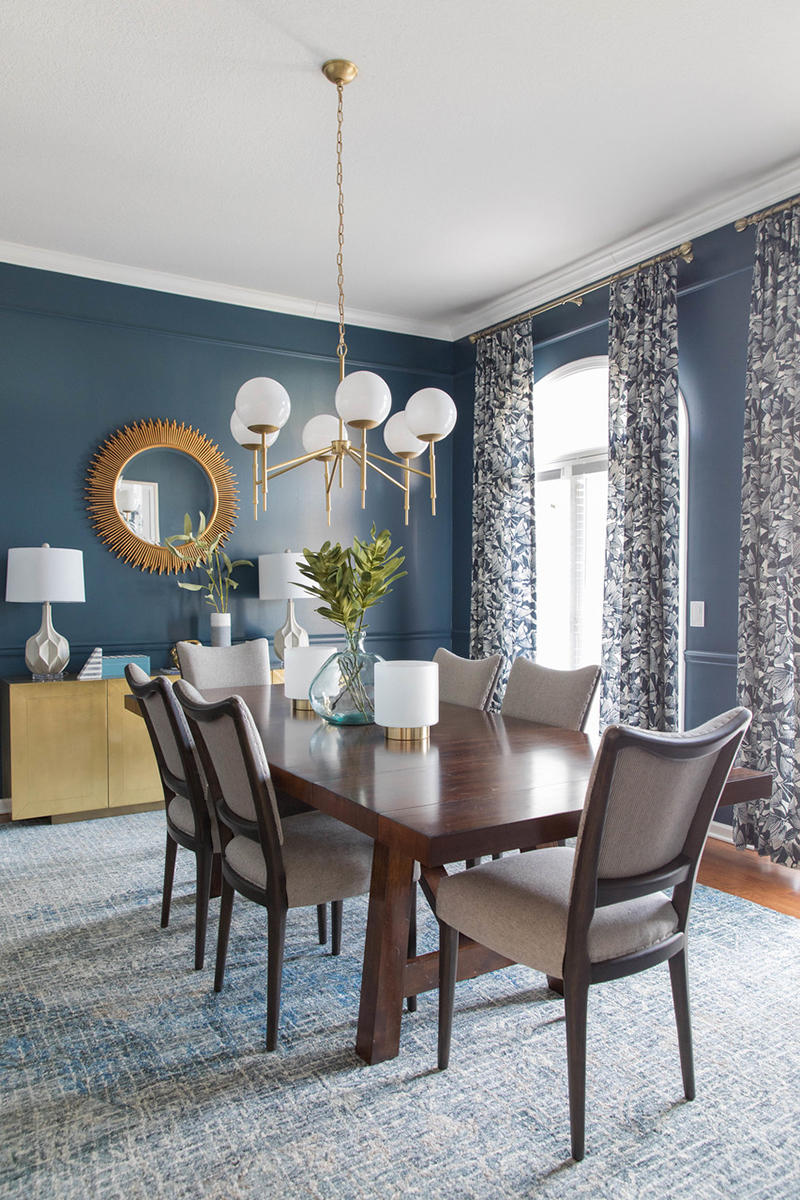
What does that look like now? You said people are shopping on the internet. Have you abandoned product as a profit center then?
Cassaw: A little bit, in a way. We’re definitely charging a lot more on the time side versus product side. We still try to make a little bit of a markup, but there are so many times when we’ll pull a bar stool or something for someone and they’re like, “Well, I saw it on this website and it’s $30 or $40 less—can you match that price?” It really made us look at how we charge and what we’re charging for—our time versus product. It’s a lot more about charging for that experience and the unique things that we can bring to them versus every single item.
Has that changed how you talk about what you bring to the table with clients, as well?
Benson: Totally, 100 percent. We’ve both been in this field for many years now—long enough to know what it was like before the internet boom. Back then, I feel like a lot of the worth that people saw from working with a designer is that they could find product and material that they couldn’t find anywhere else. While that’s definitely still true, it’s becoming a lot easier for people to find things online and access things. [Now we put more emphasis on] the service that we provide, the collaboration and the turnkey [aspect]—we really can take care of it for the client and they can be hands-off and continue with their busy lives [while] we do a lot of the grunt work.
There are people that really appreciate that and want that service, and then there are some clients who don’t necessarily see the value because they like to do some of that grunt work and searching for things themselves. We’re starting to learn what our preferred clientele is like—it’s been a growing and learning experience for sure.
Do you still say yes to the project where you think the client is going to be a super-Googler? Do you work with them differently?
Cassaw: In the screening process, we try to really get an idea. We ask a lot of questions in our introductory call, like, “Where do you like to shop?” I’ll ask, “Are you the person who likes to go to T.J. Maxx and sift through the millions of options, or do you like to go to Nordstrom and get a few options?” We definitely prefer more of the few-options type of client—it’s a little harder to work with the person that does want to sift through all this stuff, and we might price our project a little differently for that kind of client because it will take us extra time to compare prices online, but I wouldn’t say we turn away from them.
That question of where people shop—whether it’s for clothes or furniture—is there any answer that would make you not want to take a job?
Cassaw: I don’t love it when people say Pottery Barn, only because we’ve had a lot of quality issues with them in terms of upholstery pieces.
Benson: I can’t think of anything specifically that we’d be like, “No way.” Maybe Kirkland’s? Sometimes that will hurt a little bit. Typically, people are like, “Oh, I shop at local places,” or “I shop at West Elm.” We’re great with West Elm. The quality is pretty good for the pricing. If they say West Elm, that gives us an understanding of the price point they’ve shopped before, or more of the look and feel that they’ve shopped before.
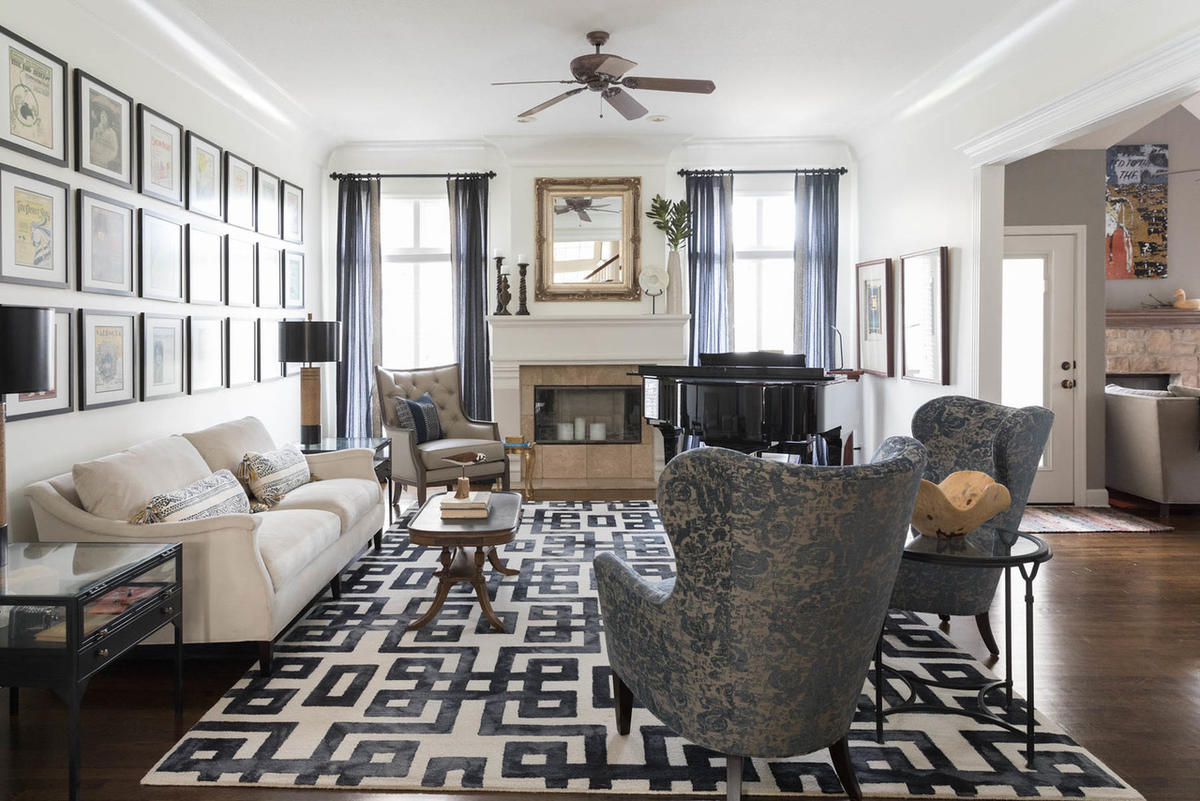
What does your team look like right now?
Benson: It was just the two of us for the first three years. The first person we brought on was someone to help us with our books—Katy’s mom, because that’s her thing, thank goodness. That was our first big move; we knew we really needed someone to tackle that. From there, we moved on to bringing on our first design assistant. We’re up to two design assistants now that are with us full-time, and then we have a part-time studio coordinator who helps us with the ordering, tracking and back-of-house things.
For the two of you, how do you divide and conquer? Who does what, where, when?
Cassaw: We’ve evolved that as well. Each of us were on everything all the time, and then we thought it would be overwhelming being on all projects. We’ve divided that a little bit in terms of workload. When a new client reaches out, I typically talk to them first to screen them, and then I work with Kat to determine if that client or project is a good fit. From there, we split up going to new-client consultations. Typically one of us will go, and then one of the other designers will go with us to the initial consultation. From there, based on project timeline and scope, we break it out per project within our team.
On the larger projects, all of us are typically collaborating together, then on some of the medium to smaller ones, we’ll maybe have the two of us on it. We mix and match [staffing at various stages] as projects progress and finish up. We’re very collaborative and have a team atmosphere. Kat and I always said we could never do this alone, and it’s true.
Is there a sense for a client that one of you more than the other is in charge of their project? Are they getting both of you behind their project? How does that piece work?
Cassaw: We have a point person on the project who controls the flow and [communication], but with a lot of our larger clients, Kat and I are definitely front and center for design aesthetic and making sure we’re putting our best foot forward for the whole project.
How many projects are you working on at a time?
Benson: What’s our recent count, Katy?
Cassaw: Forty-five. With what’s happening, we’re having a lot of new clients—plus repeat clients that we worked with for years coming back because of the pandemic and the extra money flowing that they didn’t spend on vacation. It’s challenging in that the past people are very important to us because we build relationships with them, but some of these newer projects are amazing, so we don’t want to give those up. We also have two clients adding a lake house—so then it’s two projects in one. We actually have three of them right now.
Who is your typical client?
Benson: That is such a great question. I think, organically, a lot of our clientele are younger families that crave an approachable design for their house. They want things to look put together, but they also don’t want to freak out if their kid spills milk on the sofa or they have dogs—just approachable, casual living. I don’t know if it’s a generational thing, but a lot of us grew up with grandparents that had rooms that we weren’t allowed to go in and furniture we weren’t allowed to touch, and I think some of us have some trauma from that.
Our main clientele are those younger families that are growing in their careers and their families and building new homes and needing more of that grown-up furniture. You take all the hand-me-downs from your first place and move them into all your apartments. You’re finally getting your house and wanting some nice furniture. I would say that’s probably about 99 percent of our clientele. Then we have a few older ladies who we love that are of the traditional set, but still want something a little more comfortable and colorful and funky. We do a lot of that too, but I would say the majority is young families.
Cassaw: When we started our business, we [never] really set out [with], “This is the design aesthetic we’re going to do, this is the type of house we’re going to do.” We’ve always just said, “Let’s focus on the client and what the client really wants.” I feel like a lot of our clients have older homes and are remodeling or reinventing them versus doing a lot of new construction. We do have new-construction jobs, but [most] are older homes.
Where do you see the most opportunity to grow? What comes next?
Benson: We just would like to breathe. We’re learning how to scale our business and grow our team, which is challenging for us in the sense that we went to design school and love design—we didn’t go to business school, and we’re just trying to figure out the best way to handle all of this. We want to be able to still provide a great service for everyone that wants to work with us, so also learning our limits and our boundaries and what we can really take on.
What are the pain points that have come with this past year?
Cassaw: Naturally, Kat and I are both people-pleasers. We want everyone to love it and be happy with the experience. We have a hard time saying no to clients, because we started our business because Kat and I loved helping people in their homes and improving their atmosphere and environment through design. But at the end of the day, we both have young families and family life is very important to us—balancing the art of making everyone happy and taking on projects that we feel are a right fit for us, [while] balancing that with our family and our home life has been challenging, definitely.
Is it about bringing in more people or structuring the work differently? How do you navigate the added workload?
Benson: We have added a new hire since COVID. She’s been with us about six months now, since halfway through the pandemic. We [already] needed help before the pandemic hit. Then that happened and we were all a little nervous. We didn’t know what the future was going to look like, and then we started seeing the influx of clients and that’s when we said, “OK, we’ve got to bring someone on.” We are currently looking for another back-of-house office person to help streamline those processes so that our current person can move to more of a project management role.
Because we’ve had such huge growth on the remodeling and new-construction side, it takes a lot of our time managing that. It’s taking a lot of our time away from the things that we are better at, and [we’ve realized] that maybe someone else could handle [the new-construction work]. That’s been a learning experience for us, too—what we filter out to other people and what we need to keep doing ourselves.
For each of you, is there anything that you will absolutely hold on to, and that you would never want to delegate away?
Cassaw: I really like talking to clients in the beginning and getting a sense of who they are and what they’re truly like. I also really like social media—I don’t necessarily feel like I want to do that forever, and I’m ready to outsource that a little bit, but I like to have a bit of creative control and a voice in what we say. I think it comes down to having the time to post things. It’s such an important part of the world now that it does require more of a time commitment, but I really enjoy that stuff.
Benson: There’s so much that I enjoy, too, which is why we’re having a hard time delegating. I really love conceptualizing ideas for a client and [creating] the overall design direction. That’s something that Katy and I have talked about, with her taking over talking to new clients, she’s much less socially awkward than I am. She’s excited talking to people, [while] I get a lot more, Oh, my God, and break out in hives. She’s definitely taken on that role and shines in it. We’ve talked about me taking on more the design direction and overseeing design details, all the back side of stuff, with our new hires, and making sure they understand our brand and our design aesthetic.
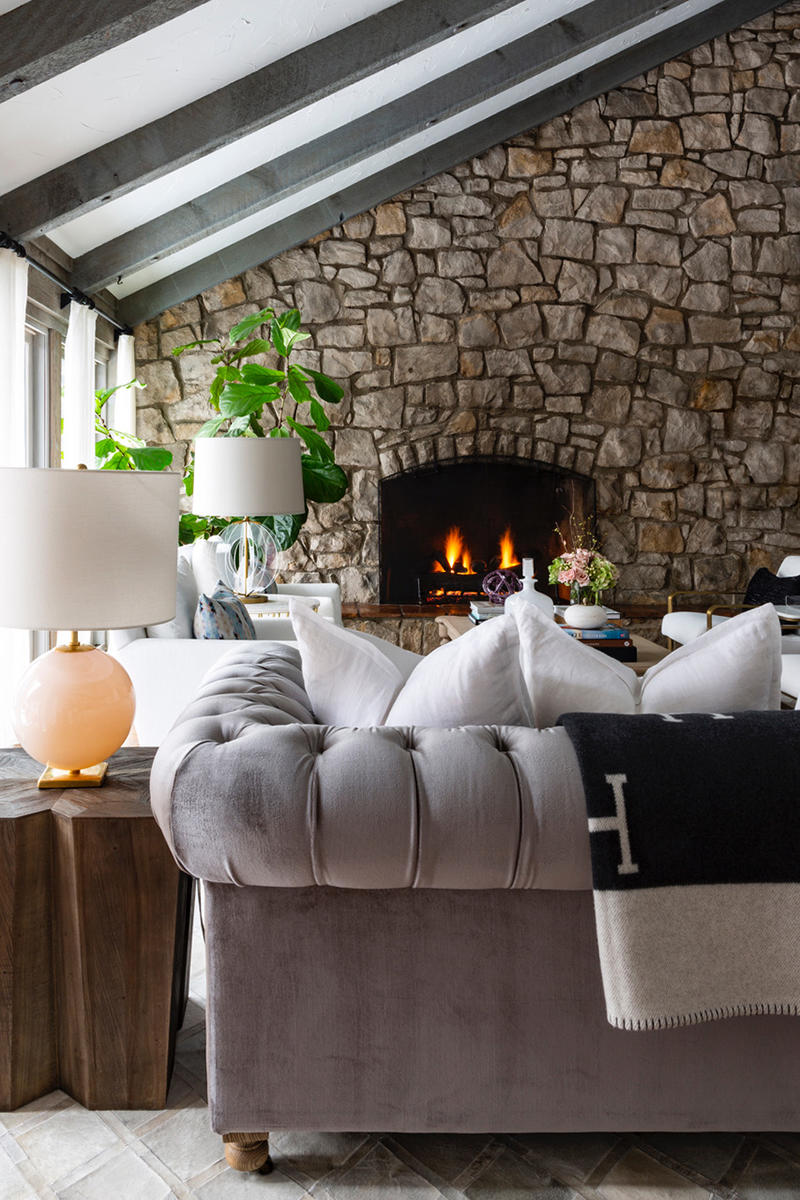
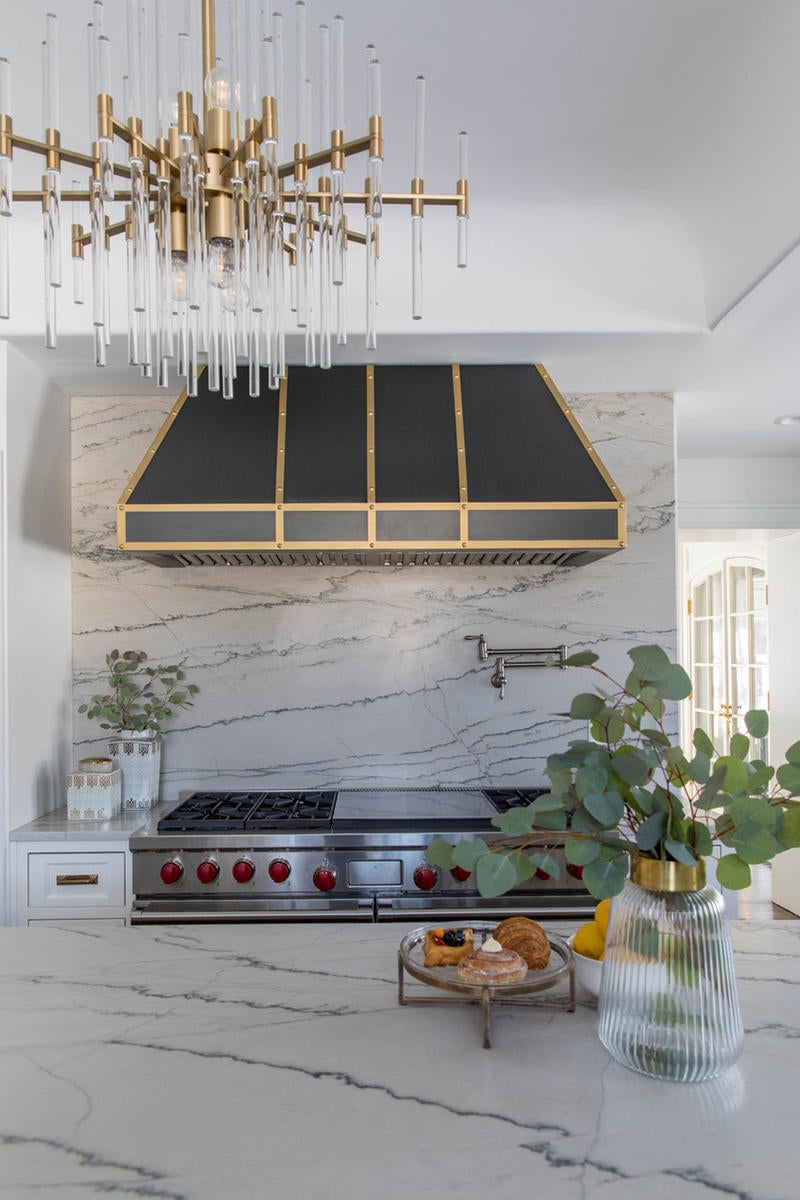
What does the getting-to-know-you phase look like with clients? How do you figure out what they think they need and what they actually need?
Cassaw: They typically just reach out. We have a startup project form on our website, so they’ll either each out that way or through a phone call. I typically set up an introductory call with them to understand their background, their families, the house they’re living in or buying, the projects they’re looking to do. I ask them a ton of questions. Budget is very important at the beginning because it helps us know it’s reasonable for the scope of work they’re trying to accomplish.
In the last couple of years, we’ve tried to elevate that screening process in the beginning because we’ve just found that we can’t take every project on. We’ve had such an influx of inquiries that we have to make sure it’s truly the best fit and that their timeline is going to work for us, because right now, we’re on a three-month wait. I have scheduled projects out quite a ways, and people are willing to wait, which is amazing and we’re so thankful, but we also have to be truly honest with everyone at the beginning that, “This isn’t a project we can take on right now,” because we have to scale and push people out to be able to have a quality experience with us.
What’s the duration of a typical project?
Cassaw: If it’s just furnishings, probably six months. I would say three to four weeks is the timeline of initial consultations to presentations, partial presentations, design direction. Then it always varies on how quickly people move forward. Sometimes people decide right in that meeting, “I want this, this and this,” and sometimes people take months to decide what they want. I think that is probably one of the biggest challenges of our business—we can’t ever predict the timeline and how fast or slow people will move forward. It’s been really hard to navigate, in that if we have a lot of inquiries coming in, it’s hard to determine when we can take more on.
What is the process of the presentation?
Benson: We do everything digital now, but it’s the same idea of design boards. We just do more of a visual design concept. What we like to do, which may be a little different from other people, is give clients a few different concepts—a few different ways they could furnish the room or a few different ways we could remodel their kitchen. We always try to give them one, which is what they are asking for, and then sometimes we’ll try to give them some that are a little different and try to push them a bit. We like to give them options. We don’t want to feel like they just got one idea.
Because of that, there are sometimes people that can look at one concept and they’re like, “Yep, I’m all about it. It’s great.” Some people need to digest it and mix some of the things together from different concepts. I think because of that, it’s a good thing for the client to get different ideas and opinions and ways of doing things, but for some people, it can slow them up a little bit because they really have to think through.
How far along are those concepts when you’re showing them the three options?
Benson: It depends on how big the overall scope is, but it’s usually inspiration photos, product selections, material selections, furniture styling and base planning drawings. Sometimes, we’ll even have some elevation drawings. If it’s a whole home and we’re just trying to get an overall feel of what they like, we’ll do a lot more overall inspiration images and a few details, but if it’s a one-bedroom, it’s extremely detailed.
Once you land on the direction, that’s when you start to present individual pieces, correct?
Benson: Typically, yeah. If we’re on full home construction, we’ll filter down the overall direction. For smaller jobs, we have the concepts completely filtered down before that first presentation [so] that they really pick everything from there and move on.
One thing I’ve heard a lot this year is that designers who have seen huge growth are leaning away from taking one-room or two-room projects. Is that a direction you’ve been thinking about—saying whole home or nothing?
Cassaw: A lot of our clients are definitely not just one room anymore. It’s definitely [evolved] into, “Come out, look at my entire house. I may start with my master bedroom, but I want to see the whole house,” over years or over phases. We have a lot of people that are like, “I want to start with this. I want you to look at this, X, Y and Z while you’re here. I may do that now and maybe that in the future.” We really don’t take on just one room unless we know it’s going to lead to more.
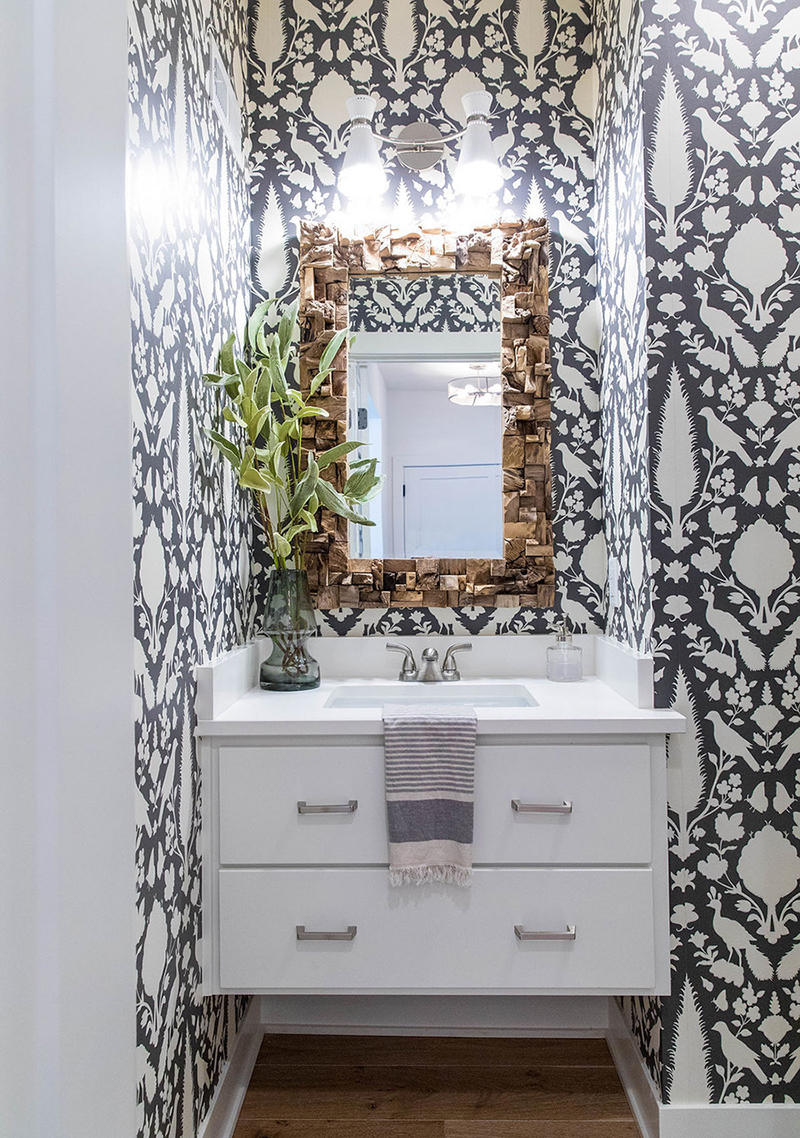
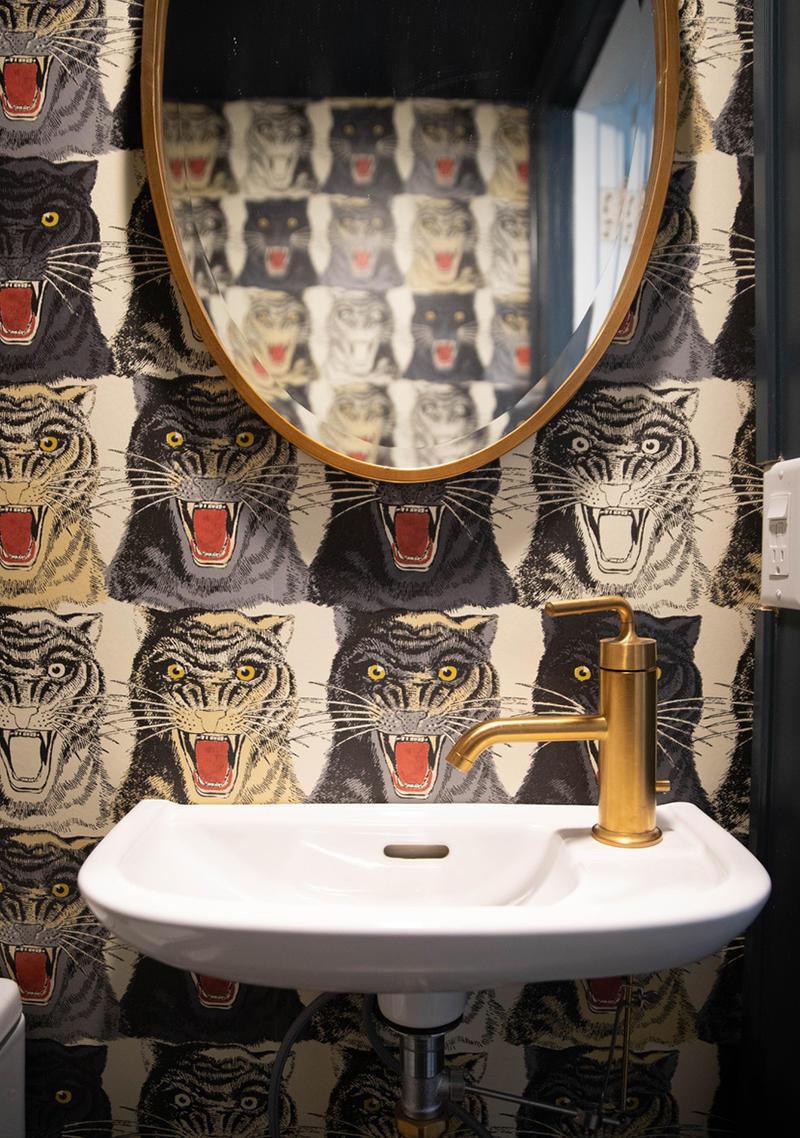
Looking back, what is the biggest thing about starting the firm that you wish you had known from the start?
Cassaw: What kind of a world it would be? Honestly and truthfully, Kat and I, we started our business from my house with a couple of clients and maybe three or months after, signed our lease for a studio space. Was it a two-year lease, Kat?
Benson: It was two years, yeah. I was freaking out.
Cassaw: We were like, “How are we going to pay this lease when we don’t have a business anymore, because there’s no way this will last two years.” We didn’t ever think it would grow to be this. Honestly, sometimes I walk into our studio and I’m like, “I work here?”
You said a lot of people work independently and there aren’t a lot of big firms, but what is the local design community like?
Benson: It’s a lot of one-man and one-woman shows. There are a lot of people who are doing it out of their homes—that’s super common.
Cassaw: There are a couple of design-build companies where they do the build or remodeling in-house, which is not something we do. We work with contractors that we have relationships with, but they’re not paid through us. It’s very different, but there are a few different design-build companies that are doing really great stuff—just a little differently than how we work.
Benson: Ours is a full-service design firm. In Kansas City, there are one or maybe two others besides ours. It’s a lot more single-person firms with maybe a design assistant and smaller-scale, amazing things. One of them has been a mentor of ours that we love and he does an amazing job. But when we get to this point of having multiple employees and really scaling and growing, we’re finding it difficult. We don’t feel like there’s a ton of people locally we can turn to and ask for help, because there really isn’t anyone else to ask. It’s a lot more individual, I would say, on the design side.
I wonder why that is, what pushes people in that direction.
Benson: I’m not sure either. I don’t know if it’s just that in the past, there hasn’t been such a huge demand, so people are afraid to really go full-time with it and it’s more part-time people. I don’t know.
Before COVID, was there an epicenter of the industry—a place where people can really come together?
Cassaw: Not really. We’re very underserved in Kansas City. Chicago has their Merchandise Mart, and really, that’s the closest [thing] to us. We have a couple of showrooms that are great and that we’ll utilize and we’ll see a few other designers there, but really, we don’t have a mecca center, which is a bummer.
You were also just published recently in In Kansas City—congratulations! What role has media played in helping you grow?
Cassaw: I think that’s one of the things that we took from the firm we worked for. [That designer] always spent money on advertising to keep her name out there and keep the business out there, and I think we felt the same—it’s always been a thing that we felt was pretty important. We don’t advertise in every publication, but we do it every once in a while, just to keep our brand and our name in people’s eyes and minds. Then [the editor has] featured some of our bigger projects, and it’s just been amazing. We’re so thankful and honored to have those projects that we worked so hard on to be out there in the world for people to see.
What does success look like to you? Where do you want the firm to go or grow?
Cassaw: It’s never really been about making the most money that we can. It’s never been about becoming millionaires. I think [it’s about] having projects that we feel are making a difference in someone’s life, and then also feeling proud and excited about the project and the pieces we put out there.
Benson: And it’s evolved over these seven years, too. At the beginning, we were in survival mode—success was a business [that] could pay my grocery bills. Now I feel like success is having that healthy work-life balance—being able to provide for my family but also enjoy my family, and create this firm and place to work where other aspiring designers want to work, feel comfortable and are able to grow and empower themselves. I think it’s amazing to have a place that can really help nurture younger designers. I feel like that’s part of our success story, creating that place for the next [generation] so maybe they don’t have to start from scratch.
To learn more about Kat Benson and Katy Cassaw, visit their website or find them on Instagram.
Homepage image: Kat Benson (left) and Katy Cassaw | Aaron Leimkuehler
















